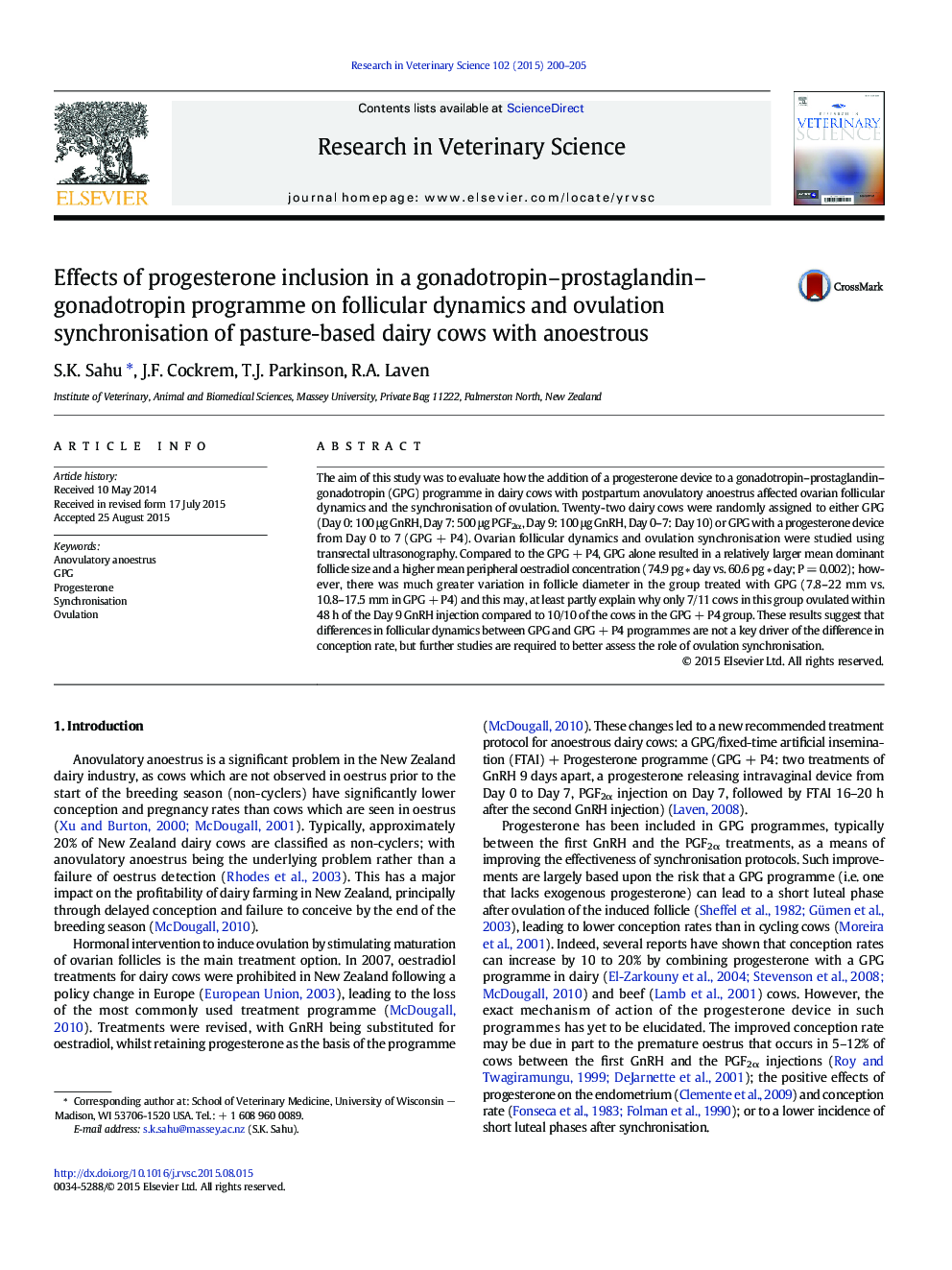| Article ID | Journal | Published Year | Pages | File Type |
|---|---|---|---|---|
| 5794613 | Research in Veterinary Science | 2015 | 6 Pages |
â¢The physiological effects of GPG and GPG + P4 programmes were compared in anoestrous dairy cows.â¢Ovarian follicular dynamics and plasma concentration of oestrogen and progesterone were measured.â¢Few differences in follicular dynamics were recorded.â¢The GPG programme resulted in a larger dominant follicle and a higher oestradiol concentration.â¢Ovulation was better synchronised in the GPG + P4 than the GPG cows.
The aim of this study was to evaluate how the addition of a progesterone device to a gonadotropin-prostaglandin-gonadotropin (GPG) programme in dairy cows with postpartum anovulatory anoestrus affected ovarian follicular dynamics and the synchronisation of ovulation. Twenty-two dairy cows were randomly assigned to either GPG (Day 0: 100 μg GnRH, Day 7: 500 μg PGF2α, Day 9: 100 μg GnRH, Day 0-7: Day 10) or GPG with a progesterone device from Day 0 to 7 (GPG + P4). Ovarian follicular dynamics and ovulation synchronisation were studied using transrectal ultrasonography. Compared to the GPG + P4, GPG alone resulted in a relatively larger mean dominant follicle size and a higher mean peripheral oestradiol concentration (74.9 pg â day vs. 60.6 pg â day; P = 0.002); however, there was much greater variation in follicle diameter in the group treated with GPG (7.8-22 mm vs. 10.8-17.5 mm in GPG + P4) and this may, at least partly explain why only 7/11 cows in this group ovulated within 48 h of the Day 9 GnRH injection compared to 10/10 of the cows in the GPG + P4 group. These results suggest that differences in follicular dynamics between GPG and GPG + P4 programmes are not a key driver of the difference in conception rate, but further studies are required to better assess the role of ovulation synchronisation.
